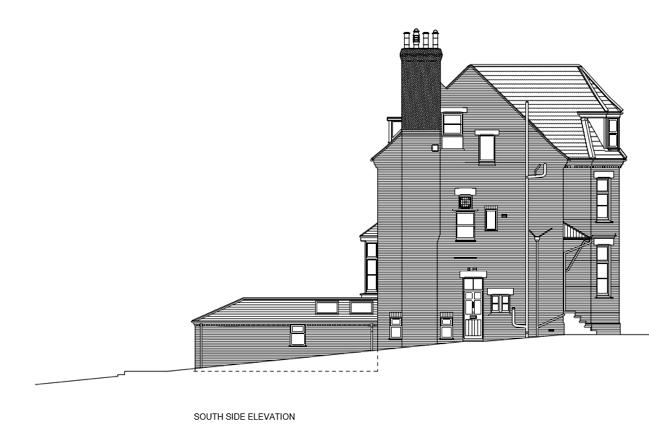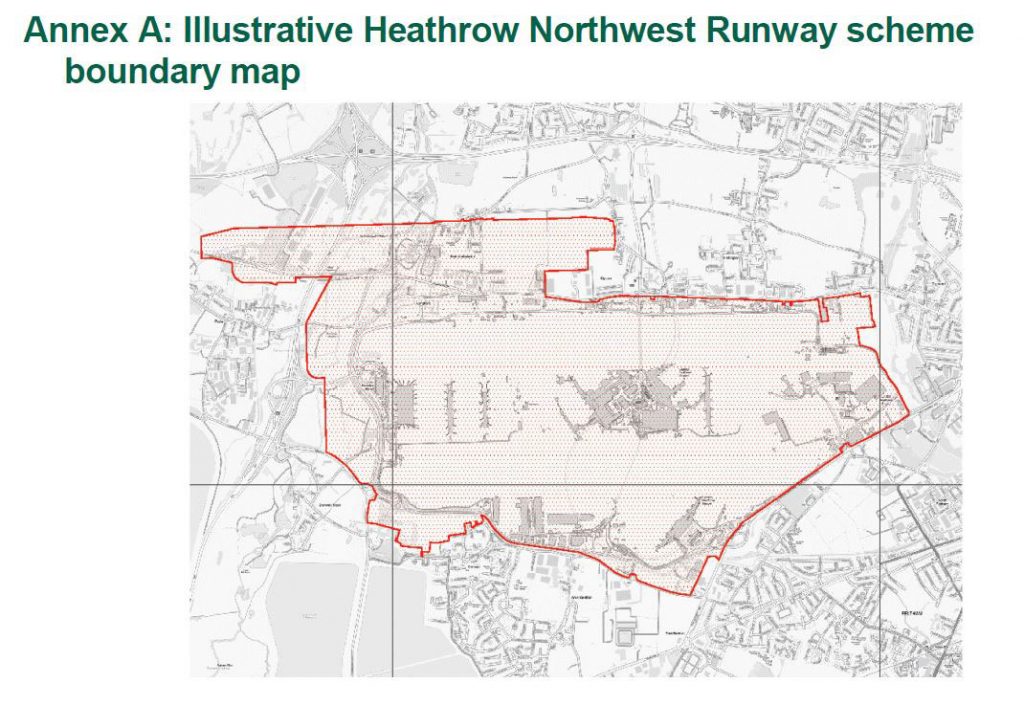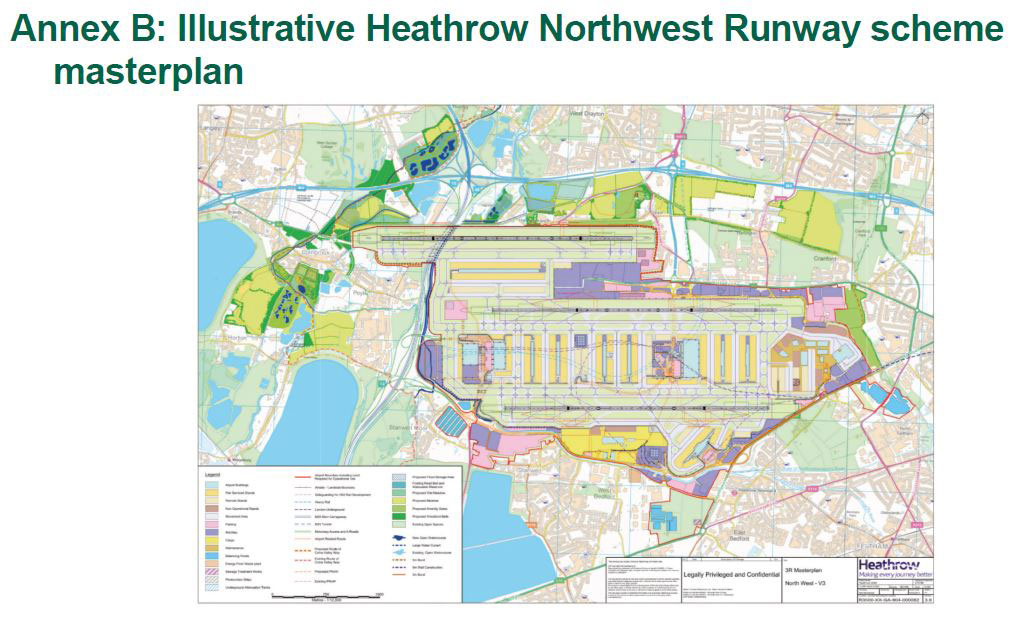Heathrow Expansion – The Debate

The government has got the ball rolling with the Heathrow Plan by developing a National Policy Statement (NPS) framework to assess applications despite the on-going legal challenge.
Our very own Legal Beagle Farhana Hussain invites you to have your say. Are you for or against a 3rd runway for Heathrow Airport?
- Should we have a 3rd runway for Heathrow Airport?
- If in a year’s time, the development of a 3rd runway cannot pass a simple legal test, where will we be? What do you think? We present you with the facts

Source – NPS – additional runway boundary
The Heathrow Expansion – if allowed, it could be completed by 2020.
Let the debate commence…
For the development of the third runway:
- The expansion could potentially create £60 billion of economic benefits
- We need more capacity! London is growing, we need to meet the requirements now for the future
- It would give the UK and economic boost. Improving connectivity with the rest of the world. Supporting exports, trade and job opportunities
- There would be an allocated £700 million for noise insulation. It’s worth noting that there have been 84,000 noise complaints since January 2016…
Have your say!
Against the development of the third runway:
- The expansion would cost approximately £18.6 Billion
- It might hamper the UK’s efforts in tackling climate change
- The GLA suggests that Heathrow Airport would breach the EU regulations on levels of Nitrous Oxide
- There would be a destruction of communities – potentially the village of Sipson could be destroyed, that would include 700 houses and 10,000 people might need to be re-homed. Richmond Upon Thames and Twickenham noise levels are already over 50 decibels – the level that the world health organisations considers to be problematic. Solutions to which would need to be found.
Have your say!
This isn’t an Urbanissta opinion article. Planning is our business, customers are important to us and we are always interested in your thoughts.
Here’s an interesting question…
Not long after the High Court decision to delay the appeal for a judicial review of the expansion, the government have issued a draft National Policy Statement. The decision to delay the appeal doesn’t halt the development of the scheme – so where will we be in a year’s time? What do you think?
Only time will tell…
The government considered the NPS to be the most appropriate method to put into place the planning framework for the 3rd runway. As the schemes are regarded as nationally significant infrastructure projects pursuant to the Planning Act 1998, the government have decided that a development consent application is the best way forward to deliver the appropriate scheme.
We provide a summary of the NPS below:
Purpose and scope of the Airport NPS
The NPS is an important tool in providing a primary basis for decision making on development consent applications (DCA) and any future airport infrastructure plans going forward. It sets out planning policy which will need to be considered in conjunction with any application made for a significant infrastructure project. The airport NPS sets out the following:
- Government policy on the requirement of a third runway
- The preferred location and scheme to deliver the development
- Considerations given to particular DCA in respect of Airport NPS
Compliance
Compliance with the NPS is crucial – the SoS in making a decision would expect any proposed development to have regard to a number of components including design, implementation and delivery. In some cases, other NPSs may be relevant to the proposal, however, if a conflict arises, significant weight would be given to the recently designated NPS.
Section 104 (Planning Act 2008)
Similarly, to housing and the consideration of local plans, the SoS will give regard to the relevant NPS when assessing an application for significant infrastructure projects unless they decide that doing so would:
- Breach international obligations (eg. Kyoto Protocol)
- Be unlawful
- Lead the SoS into a breach of duty under any legislation
- Adverse impacts outweigh the benefits
- Contrary to legislations how decisions are to be taken
It must be noted that there is no provision in the Planning Act 2008 for the requirement of an outline application, followed by reserved matters approval unlike the Town Country Planning Act 1990. Despite this, developments can be phased.

Source; NPS Draft Masterplan of Scheme proposals
Brexit
Until exit negotiations are complete, the UK remain a full member of the EU and therefore the EU legislation applies to the development of the policy and decision making in respect of the preferred scheme. This may need to be revised once negotiations are complete.
Establishing the need for additional airport capacity
The Airport Commission, in their report dated December 2013 noted that there was a need for an additional runway in the South East of England by 2030.
The following shortlisted schemes were also considered: Gatwick Second Runway scheme, Heathrow Northwest Runway scheme, and Heathrow Extended Northern Runway scheme as well as the option of a new airport in the inner Thames Estuary (this was later dismissed as… “The proposal of a new airport in the inner Thames Estuary as it was did not perform sufficiently well to warrant consideration alongside the three schemes that it decided to shortlist.”)
The Airport Commission concluded their Final Report in July 2015 that the NW Runway at Heathrow presented the strongest case in respect of expansion and was considered to offer the greatest strategic and economic benefits to the UK.
Assessment Principles
General Principle
The NPS covering NW Heathrow scheme establishes the needs case provided that it adheres to the detailed policies set out in the NPS and the legal constraints posed by the PA 2008. Furthermore, the following must be taken into account by the examining authority and SoS:
- Potential benefits are economic, job creation and environmental improvement
- Potential adverse impacts and mitigation measures to compensate for such (national, regional and local levels)
Scheme variation
Although the preferred scheme has been identified – NW Runway – variations can still be made to the scheme. It is noted that the NPS does not prejudice the viability or merits of an application, but rather governs the location and limits and nature of such schemes.
EIA
The examining authority determining the application will assess significant effects at all stages.
Habitats Regulations Assessment
Before granting consent, the SoS must have regard to the Conservations of Habitats and Species Regulations 2010. If the relevant authority conclude, that the development is likely to have a significant effect on a European site and how it is not directly linked to the management of the site, an appropriate assessment must be carried out to assess the implications.
Equalities
An objective identified by the Airport Commissions (AC) was to: “Reduce or avoid disproportionate impacts on any social groups.” At the consultation stage, the AC must carry out an equality impact assessment.
Alternative requirements
The applicant must comply with the following legal requirements:
- EIA Directive
- Consideration of alternatives e.g Habitats and Water Framework
- Flood risk sequential test
Criteria for ‘good design’ for airports infrastructure
Good design is an integral consideration. Visual appearance, costs and sustainability all play a significant part in considering the scheme design.
Good design must meet the principle objectives of mitigating or eliminating any issues that may arise from an adverse impact. The scheme must also be functional and fit for purpose.
Costs
The scheme must be cost efficient and sustainable and seek to minimise costs to airlines passengers and freight owners.
Climate change adaption
The development must plan to avoid increased vulnerability to the impacts rising from climate change. Any risks must be managed through suitable adaptation measures. Green infrastructure is encouraged.
Pollution control
The SoS will assess whether the development is an acceptable use of land and impacts of the use. The Environmental Agency who issue environmental permits (EP) will review the application to check whether the scheme meets the relevant EP requirements. Pre-applications can be conducted prior to making the application.
Common Law Nuisance
When an application is submitted, the examining authority will assess how the sources of nuisance might be mitigated so that appropriate recommendations are put to the SoS before granting permission.
Security considerations
Proportionate and protective security measures must be designed into new infrastructure projects at an early stage in the development.
Health
Measures to avoid, reduce or compensate for adverse health impacts must be considered.
Accessibility
The development must, in accordance with the legal requirements and best practice, satisfy the following:
- Include clear details on how plans improve access, address accessibility and need
- Ensure all bus/train fleets comply with legal access standards by 2020
- Easy access and car parking provisions for the disabled
Specific impacts requirements
Any application put forward would also need to have regard to the following specific impacts requirements:
- Surface access
- Air quality
- Noise
- Carbon emissions
- Biodiversity
- Land use
- Resource and waste management
- Flood Risk
- Water quality and resources
- Historic environment
- Landscape and visual impacts
- Land instability
- Dust, odour, artificial light
- Community compensation
- Community engagement
- Skills
- Ruling out a fourth runway
What happens next?
- Following consultation and adoption of the NPS, and assuming any legal challenges are unsuccessful, the NPS will form the basis for the application for the DCO which is required to permit the necessary development of the construction of the new runway
- The critical aspect will be the impact of increased noise and air pollution and whether the government and Heathrow Airport Ltd are able to demonstrate that they can put together, and rely upon, “A comprehensive package of mitigation measures.” to overcome any harmful impacts
- If it cannot be demonstrated that an effective and legally binding set of restrictions can be put in place, it may jeopardise the whole project as the government have made it clear that it will be a condition of approval, that the air quality legal requirements will be met
The residents who will be affected by the expansion want to hear your views! (Read more)
The government want to hear your views! (Read more)
Relevant dates for the expansion (read more)
What’s next?
Read the planning process (here)
Housing and planning act – changes to legislation (read more)
The town and country planning act 1990, section 215 – Best practice guide (read more)
That’s a lot of information for you to absorb but we are interested in your opinion. What do you think should happen?
Are you for or against The Heathrow Expansion?





